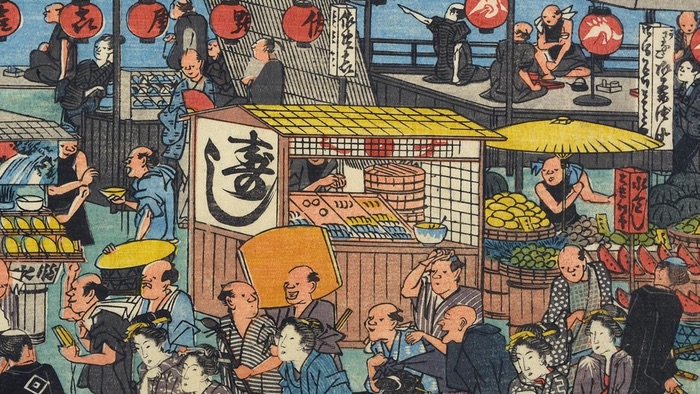
Podcast: Play in new window | Download (Duration: 25:29 — 23.5MB)
Subscribe: Google Podcasts | Spotify | Android | RSS | More

Eric Rath’s history of sushi traces the word back to its origins as a method of preserving fish through many twists and turns to today, when sushi means almost anything you want it to mean.
Notes
- Eric Rath’s book Oishii: The History of Sushi is published by Reaktion Books. It contains recipes old and new, in case you want to try making sushi at home.
- National Geographic surprised me with this article in early September: These popular tuna species are no longer endangered, surprising scientists.
- A popular culture view of modern sushi that I did not mention, precisely because it lives up to all possible stereotypes, is the amazing sequence in Wes Anderson’s Isle of Dogs. Almost more astonishing is the dedication that went into making it.
- Here is the transcript, thanks to the generosity of the show’s supporters.
- The banner image is a detail from Utagawa Hiroshige’s Amusements While Waiting for the Moon on the Night of the Twenty-sixth in Takanawa, which dates from the 1820s, with thanks to the British Museum (CC BY-NC-SA 4.0). The cover image is a detail from Bowl of Sushi, also by Hiroshige. I have not been able to date it.

Another dive into the history of food. As seems to often be the case, what we appreciate as sushi today is in stark difference to the practices of preserving fish in the past.
With all due respect, I think this eatthispodcast.com/sushi/ from @EatPodcast is a much better podcast about #sushi. But by all means listen to both and make up your own mind.
Kansas for info on seafood and Japanese culture. 😏
Latest episode now up, talking to Eric Rath of @UnivOfKansas about the long and varied history of sushi.
eatthispodcast.com/sushi/
I love Jeremy’s podcasts. Looking forward to digging into this one on one of my favorite ways to eat #bluefoods!